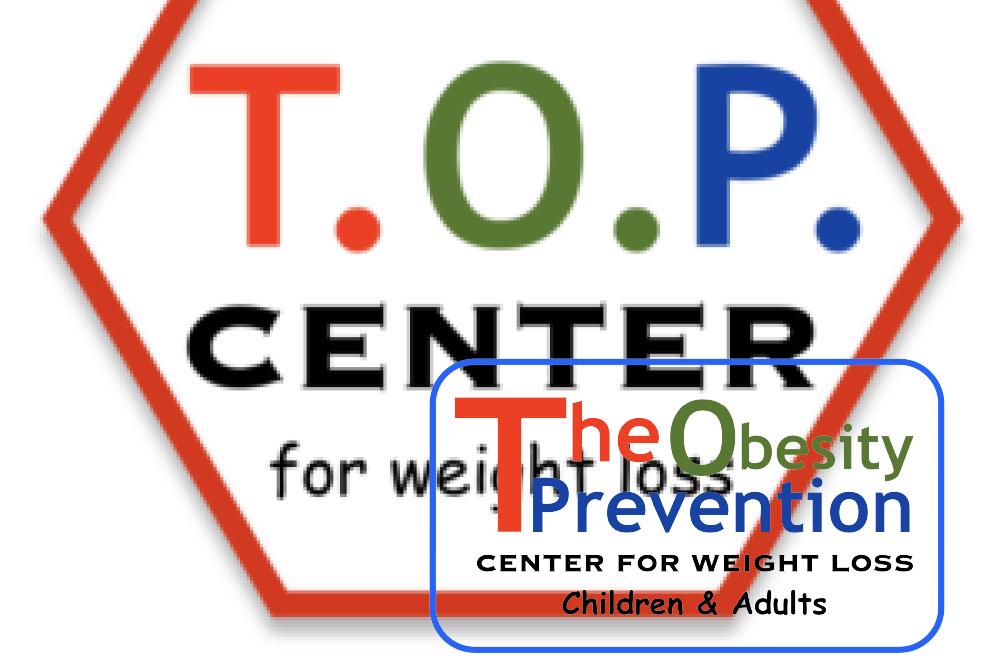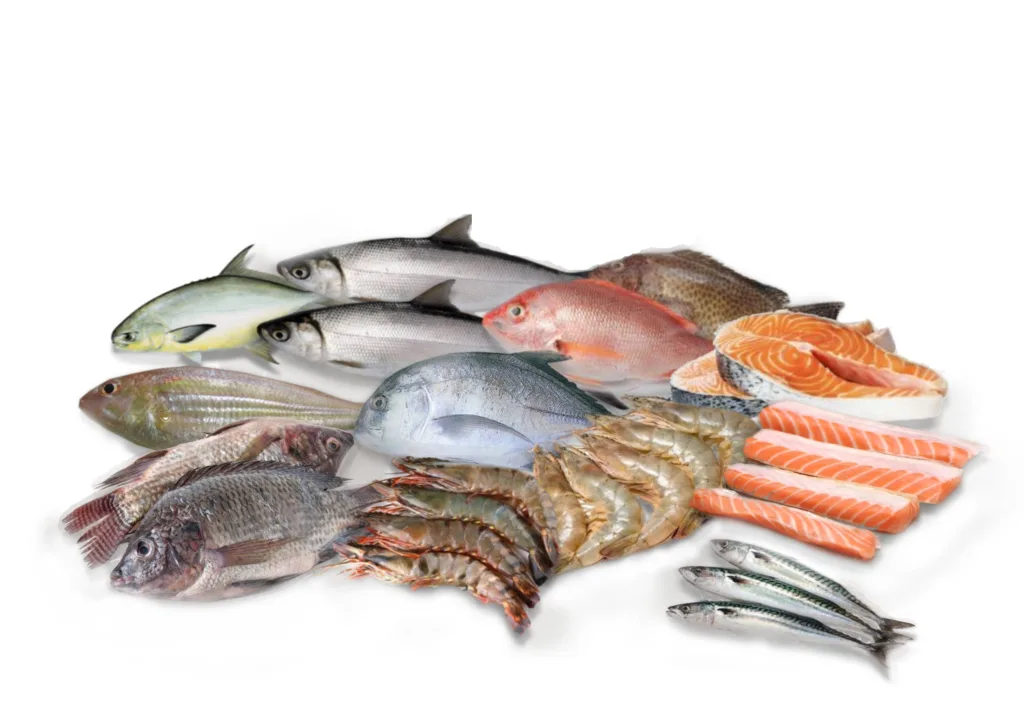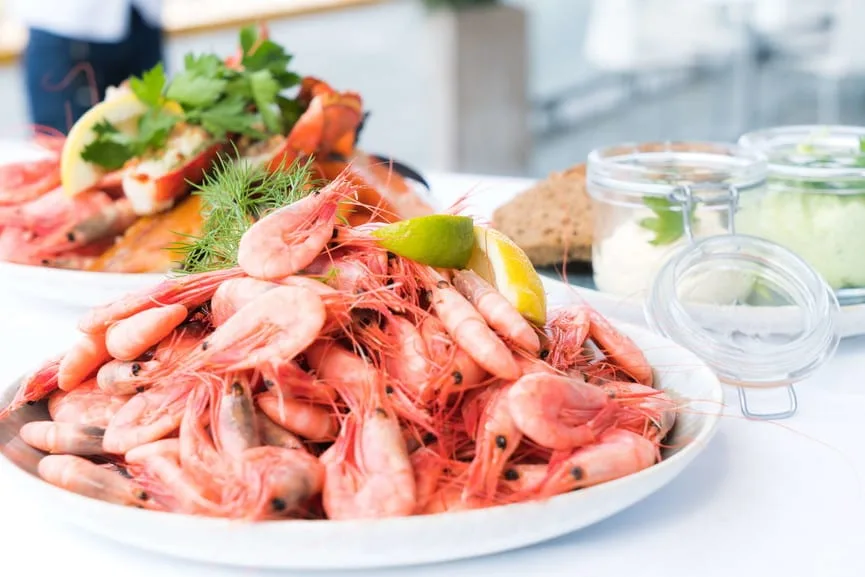For many seeking to lose weight, the thought of yet another bland chicken breast or flavorless salad is unappealing. However, the bounty of the ocean offers an exciting alternative – seafood. Fish and shellfish provide a delicious way to cut calories and achieve your weight loss goals.
In this seafood saga, we will dive deep into how these gifts from the sea can help you navigate towards a healthier you. From omega-3s to low-calorie options, seafood is packed with nutrients that support weight management. We will provide everything you need to make seafood a cornerstone of your slimdown plan.
Get ready to set sail on a mouthwatering expedition of flavor and nutrition. With the right know-how, you can harness the power of seafood to take control of your weight and health. Let’s embark on this voyage together!

The Bounty of the Ocean: A Weight Loss Ally
Many types of seafood are nutritional powerhouses that offer the protein, vitamins, and minerals your body needs without weighing you down calorie-wise. Fish like cod, haddock, tilapia, and flounder contain about 100 calories in a 3-ounce cooked portion, compared to nearly 200 calories in chicken or beef of the same size.
Shellfish are also figure-friendly. For example, a 3-ounce serving of steamed clams or mussels has only about 125 calories but packs a whopping 16 grams of protein per serving. Shrimp clocks in at a mere 90 calories per serving.
Beyond being naturally low in calories, the high-quality protein in seafood helps you feel fuller longer. The satiating protein may curb cravings and lead you to eat less overall. Protein also gives your metabolism a boost by helping build and maintain calorie-burning muscle.
Thanks to their stellar nutrition profiles, fatty fish like salmon are linked to healthier body weights. The omega-3 fatty acids, vitamin D, and other nutrients in seafood provide additional weight-management benefits that we will explore shortly.
When it comes to weight loss, protein is a nutritional superhero. Many studies show that boosting protein intake leads to better weight control by reducing appetite and decreasing fat deposits. Protein requires more calories for your body to digest and metabolize than carbs or fat. Known as the thermic effect of food, this process causes you to burn more energy digesting protein-rich foods.
Research also indicates that protein decreases levels of the hunger hormone ghrelin while increasing fullness hormones like PYY, GLP-1, and cholecystokinin. This biological mechanism causes you to feel satisfied with smaller portions and staves off cravings.
Seafood provides high-quality lean protein in abundance. Swapping out higher-calorie meats for the likes of cod, shrimp, tuna, and halibut is a smart strategy for trimming calories. Seafood also offers a delicious way to meet your daily protein needs recommended for weight loss of 25-30% of total calories.
In addition to protein, seafood delivers key micronutrients that support a healthy metabolism and aid weight management. Fish are excellent sources of B vitamins like niacin, riboflavin, and B12. These vitamins help convert calories into energy instead of storing them as fat. Many types of seafood also provide vitamin D and selenium – nutrients many dieters are low in.
Shellfish offer the benefit of being high in zinc, an essential mineral that regulates appetite-related signals in the brain. Zinc deficiency can lead to increased hunger and impaired metabolism. Getting enough zinc from sources like oysters and crab helps keep cravings in check.
So reach for seafood to gain a nutritional edge on your weight loss efforts. The unique combination of protein, vitamins, minerals, and additional elements found in fish and shellfish can accelerate your slimdown success.

The Omega-3 Connection: Fats That Aid Weight Loss
Here is a shocker – eating more fat can actually help you lose fat! That is, if you choose the right kinds of fat, like the omega-3 fatty acids abundantly found in seafood. Salmon, sardines, trout, tuna, and mackerel are packed with anti-inflammatory omega-3s, which have been shown to support weight loss.
Research indicates that omega-3s help reduce body fat, especially around the stomach area. They may also give your metabolism a rev by speeding up fat burning. Omega-3s help regulate hunger-controlling hormones like leptin to make you feel satisfied longer between meals.
Additionally, seafood omega-3s fight inflammation in the body that can lead to obesity and metabolic syndrome. Chronic inflammation disrupts signals that control hunger and fat storage. Omega-3s help counteract this process for better weight control.
Choose wild-caught salmon, sardines straight from the can, or raw tuna in sushi to reap anti-inflammatory omega-3s while shedding pounds.
Beyond aiding weight loss directly, the anti-inflammatory power of omega-3s provides other benefits that can support your slimdown journey. Reducing systemic inflammation helps improve overall health. Inflammation is tied to numerous chronic diseases and conditions like heart disease, diabetes, arthritis, and autoimmune disorders.
Therefore, getting more omega-3s can help heal inflammation that may be exacerbating underlying health issues. When your body is functioning optimally, it is easier to lose weight. Omega-3s enhance cellular function, promote heart health, reduce joint pain, decrease triglycerides, and provide many other therapeutic effects.
The omega-3s in seafood may also indirectly help weight loss by improving mood and reducing symptoms of depression. Research connects depression to excess weight, overeating, and difficulties losing weight. EPA and DHA, two types of omega-3s in seafood, are linked to lower rates of depression and anxiety.
So by improving mental wellbeing, omega-3s make it easier to stick to healthy habits required for weight management. If you are feeling down, you are less likely to muster the motivation needed to meal prep, exercise, and make other beneficial lifestyle changes.
Finally, omega-3s support weight loss by decreasing body-wide inflammation that can stall fat burning. With their potent anti-inflammatory properties, omega-3s help restore a favorable metabolic environment conducive to shedding pounds.

Seafood Selection 101: Picking the Perfect Catch
Choosing fresh, sustainable seafood is key to maximizing nutrition and minimizing contaminants and environmental impact. Prioritize wild-caught fish over farmed varieties, which often contain more saturated fat, calories, and chemicals.
For fresh fish, look for clear eyes, vibrant red gills, firm flesh, and a mild sea breeze aroma. Be wary of fish emitting strong fishy odors. Shellfish like scallops, shrimp, and clams should smell sweet and appear plump. Discard any with broken shells.
Purchase seafood from reputable sellers that adhere to sustainable fishing practices. Choosing seasonal, local options like crab and mussels also helps reduce your carbon fin-print.
Avoid heavily breaded fish or calorie-laden fried shrimp and oysters. Opt for lighter preparations like grilling, broiling, baking, or poaching your seafood.
When shopping for seafood, keep in mind that wild varieties provide more omega-3s than farmed fish. Wild salmon has ten times the amount of omega-3s compared to conventional Atlantic salmon. Sardines, mackerel, anchovies, and herring are other great wild sources uniquely high in heart-healthy fats.
If choosing farmed salmon, look for labels indicating the fish were fed a diet fortified with omega-3s or raised organically. Domestic catfish and rainbow trout are also healthier farmed alternatives higher in omega-3s.
For shellfish, pick wild-caught options when possible, like Pacific white shrimp over imported frozen shrimp. Farmed mollusks like mussels, clams, and oysters are generally safe choices with less environmental concerns.
Reading sustainability guides like Seafood Watch can help ensure your seafood purchases align with responsible fishing and aquaculture practices. Many nonprofit groups offer free downloadable guides that rank seafood based on contaminant levels and environmental impact.
Doing your homework on sourcing, species, and preparation methods allows you to maximize the slimming advantages of seafood while supporting ethical food systems.
Cooking Up Success: Healthy Seafood Recipes for Weight Loss
Take your seafood game to tasty new heights with these delicious, diet-friendly recipes:
Baked Salmon with Avocado Salsa
- Wild salmon filet
- Avocado, diced
- Cherry tomatoes, chopped
- Red onion, minced
- Jalapeño, minced
- Lime juice
- Cilantro, chopped
Shrimp and Veggie Skewers
- Shrimp, peeled and deveined
- Zucchini, sliced
- Red bell pepper, chopped
- Grape tomatoes
- Scallops (optional)
- Olive oil, lemon juice, garlic, salt, and pepper
Cajun Blackened Tilapia
- Tilapia filets
- Cajun seasoning
- Lemon slices
- Sauteed spinach
Steamed Mussels in Tomato Broth
- Mussels, scrubbed and debearded
- Garlic, minced
- Tomato, diced
- White wine
- Fresh parsley and lemon wedges
Get creative and think beyond basic fish fillets. Grill seasoned tuna steaks, roast a whole fish drizzled with herbs and lemon, or bake salmon burgers. Steaming clams and mussels keeps calories low while infusing amazing flavor.
Experiment with global flavors to spice up your seafood repertoire. Try Cajun blackened redfish, Italian halibut piccata, or Thai coconut curry shrimp.
If you are not accustomed to cooking fish at home, start with fool-proof preparation methods like baking seasoned fish on a sheet pan or grilling in a fish basket. Gradually expand your culinary skills through easy recipes that unlock seafood’s potential.
Seafood offers versatility in adapting to different flavor profiles from Mediterranean to Asian. It also cooks quickly compared to meat making it the ultimate healthy fast food.
So don’t settle for boring salmon every night. With a world of delectable seafood recipes at your fingertips, eating for weight loss does not have to mean sacrificing taste.

Sidekicks on Your Plate: Seafood Companions for Weight Loss
While seafood stars as the centerpiece, the supporting ingredients on the plate matter too. Try these slim sides and appetizers to round out a healthy, balanced seafood meal:
Salads: Greens, tomatoes, onions, peppers – toss in a lemony vinaigrette
Roasted veggies: Broccoli, cauliflower, butternut squash, carrots, Brussels sprouts
Whole grains: Brown rice, quinoa, farro, whole grain couscous
Tropical fruits: Pineapple, mango, berries
Whip up ten-minute options like citrus kale salad, herbed quinoa, or roasted asparagus to complement your seafood selection. Their fiber, vitamins, minerals, and antioxidants will give you an additional nutritional boost.
Instead of starchy sides, choose non-starchy vegetables, leafy greens, beans, lentils, nuts, seeds, avocado, plain Greek yogurt, and other high-fiber plant foods. They provide volume and satisfaction with minimal calories and carbs.
For example, pair seared scallops with roasted cauliflower and chickpeas in place of rice pilaf or creamy risotto. Or serve shrimp tacos on corn tortillas with pico de gallo, cabbage, and avocado instead of cheese, sour cream, and sauce.
When cooking grains or other starches, keep portions modest – about 1/4 of your plate. Choose whole, minimally processed options to maximize nutrition. Brown rice, barley, and farro pack more fiber and antioxidants than white versions.
Enjoy fruit for dessert instead of sweets like cake and cookies, which are heavy in refined carbs and added sugar. Berries provide fiber, vitamins, and antioxidants that support weight loss and health. Or make chocolate chia seed pudding or apple crumble with oats for more filling fiber-rich treats.
Building balanced plates with seafood, greens, whole foods, and fruit allows you to eat in abundance while controlling calories and carbs.
The Sushi Solution: Raw Fish for Weight Loss
If you are an aficionado of sushi, you are in luck – this Japanese staple can be a dieter’s delight. Sashimi (raw fish without rice) and nigiri rolls (fish over a small bed of rice) are fresh, light options.
Select lean protein like yellowfin tuna, salmon, or whitefish. Limit rice to a single layer in rolls by choosing sashimi or vegetarian styles like cucumber and avocado.
Boost nutrition with seaweed wraps and sides like edamame and miso soup. Avoid tempura batter and sauces like spicy mayo, which can pack excess calories.
As a bonus, studies show the vinegar used to make sushi rice may help prevent fat gain. So go ahead – sushi away! Just stick to the simplest varieties and lighter preparations.
Eating sushi has the advantage of maximizing flavor while controlling portions, carbs, and calories. Individual pieces provide the perfect single-serve meal or snack. You can satisfy your craving – whether for crunch, creaminess, or umami – with just one or two rolls.
When dining out, start your meal with miso soup and salad with ginger dressing. Then order sashimi or simple maki rolls along with steamed edamame. This combination offers an ideal balance of protein, healthy fats, and fiber to leave you satisfied without overdoing it on rice.
Another strategy is to order sushi a la carte. Select individual pieces of your favorites like tuna and yellowtail sashimi, shrimp nigiri, or avocado and cucumber rolls. This allows you to create a balanced nutrient-dense meal with more protein and fewer carbs.
You can also build your own combo by mixing sushi with a side salad. Pair tuna tataki and salmon avocado rolls with mixed greens, shredded carrot, and cabbage for some crunch. This makes for a lighter, more nutritious meal than the standard deep-fried appetizers and carb-heavy noodle dishes often served with sushi.
So feel free to enjoy sushi without guilt by following these tips. Sushi can be an ideal choice for healthy weight loss when you opt for vegetable rolls, sashimi, and lighter preparations.
Avoiding Hidden Calories: Sauces and Preparations
When dining out, steer clear of anything blackened, battered, crispy, or slathered in sauce. These restaurant favorites can sabotage your healthy seafood choices with hidden calories and fat. For example, a 6-ounce fried shrimp dish can contain over 1000 calories – yikes!
Instead, request grilled, broiled, steamed, or baked preparations with a lemon wedge or salsa on the side. Ask for any sauces and dressings to be left off or served in a ramekin for dipping lightly.
At home, swap out heavy cream and cheese-based sauces for lighter alternatives:
- Briny olive oil and lemon
- Tangy mustard or horseradish
- Fresh tomato salsa
- Zesty chimichurri
- Cool cucumber yogurt
With creative use of herbs, spices, citrus, vinegars, and other acidic ingredients, you can give your seafood fabulous flavor without the unwanted calories.
Avoid falling into the butter and cream sauce trap. These decadent additions can sabotage an otherwise healthy fish dish, turning it into a diet disaster. For example, Chilean sea bass with lemon caper sauce sounds great until you realize the creamy sauce adds around 200 calories per serving.
Likewise, be mindful of seasoning mixes that seem innocent but contain surprising amounts of sugar, like honey barbecue rubs. Read labels and counts calories, carbs, fat, and sodium to stay aware of sneaky additions.
Steer clear of the deep fryer which can boost calories by 300 or more per serving. Even a healthy filet transforms into a fatty bombshell when submerged in oil. Instead, try new cooking techniques like en papillote, where you bake fish sealed in parchment paper for moist tender results sans added fat.
Portion sizes also matter when dining out. Restaurants often serve 6-8 ounce fillets that are 2-3 portions by weight. Ask for a lunch-size fish plate or split an entree to better control your intake. Or take half the portion home for tomorrow’s lunch.
With some adjustments, you can still enjoy your favorite seafood restaurant meals while maintaining your healthy eating plan. Just stay savvy about preparation methods, sauces, and portions.
Seafood Challenges: Allergies and Sustainability
Some individuals are allergic to common culprits like shrimp and should choose mild, flaky alternatives. Fish like cod, tilapia, and flounder; shellfish like clams and mussels; and roe like salmon caviar are less likely allergy triggers. Always check with a doctor about specific allergies.
Sustainability is also paramount when selecting seafood. Overfishing threatens certain species like bluefin tuna, Chilean sea bass, and orange roughy. Use Seafood Watch and other guides to make responsible choices.
Farmed shellfish and US-caught fish are good options for lighter eco-impact. Support local fishermen at farmer’s markets whenever possible.
Look for certification labels like Marine Stewardship Council that indicate sustainable practices were used to harvest the seafood. Choosing seafood processed and sold locally also reduces its carbon footprint. Supporting community-based fisheries helps ensure access to seafood for future generations while providing economic benefits.
Some types of fish contain higher mercury levels and should be consumed in moderation, like tuna, swordfish, shark, and king mackerel. Women who are pregnant or breastfeeding need to take particular care in choosing low mercury seafood options that are safest for baby. Fortunately, small fish like salmon, sardines, and anchovies are low in mercury while high in healthy fats.
With some research on sustainability, sourcing, and contaminant risks, you can enjoy seafood while upholding your health, ethics, and the environment. Being an educated consumer helps safeguard seafood for the future
Thank you for reading this post, don't forget to subscribe to our free newsletter
!
